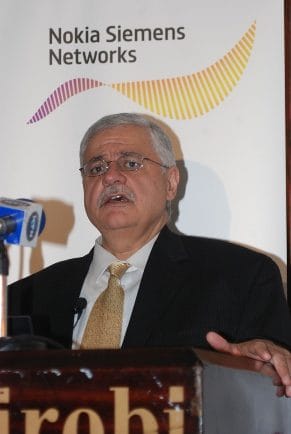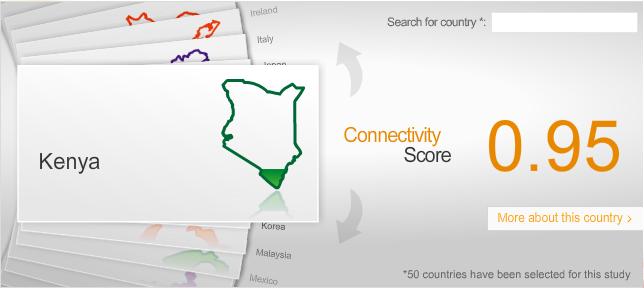Kenya has seen remarkable growth in the telecoms sector and has taken a position as a “testing ground for innovative services and offerings” largely spurred by significant tax incentives by the government. This sector could contribute more significantly to economic growth if industry players take advantage of fast-growing technologies, such as mobile broadband, and invest increasingly in human capital in their operations, a study commissioned by Nokia Siemens Networks has revealed.
Nokia Siemens Networks commissioned the Connectivity Scorecard 2011 study and notes that whereas Kenya’s consumer and business usage and skills remains robust there is a large potential for expansion especially with the liberalization of the sector. The study makes interesting observations about the contribution of policy incentives to the telecommunications and how impactful such changes can make to an economy.

The Nokia Siemens Networks Connectivity Scorecard 2011 was conducted in collaboration with Professor Leonard Waverman of the London Business School working with LECG, a global consulting firm. It is based on comparative scores between countries, and therefore, each country’s performance is measured in relation to the best performing nation in each segment at a given point of time.
Connectivity Scorecard 2011 polled 50 countries globally looking at relative performances in areas such as infrastructure, usage and skills among consumers business and public sector. Kenya lies at the bottom of the resource and efficiency-driven economies index in this scorecard along with the five poorest performers, trailing India, Nigeria and Pakistan, but slightly ahead of Bangladesh. “However Kenya’s relative strengths lie in its consumer and business usage and skills components with a strong mobile subscriber base of over 20 million. This represents nearly 60% of the total population, better than average adult literacy rate and a high secondary-school enrolment rate. The extensive use of broadband especially on mobile phones represents a largely untapped potential as the economy grows,” said Mr. Diliani, in reference to the study.
“Tax policy incentives have increased subscription and usage in Kenya and now more people are able to communicate through calls and short messages as well as interact over the internet. This is good for the industry because as we are now seeing an emergence of innovative new business models fuelled by a growing middle class and rising income levels. These market characteristics have far-reaching effects for Kenyan economy,” said Mr. Diliani.Nokia Siemens Networks has taken lead in developing solutions aimed at easing internet access and sees information and communications sector (ICT) as a source of innovation, investment and national self-confidence.
Said Mr. Diliani: “Further, competition in the telecoms sector could help attract more investment and aid the development of broadband services, an area where Kenya lags behind. The mobile sector in Kenya may, in fact, play a critical role in spurring the development of broadband, as mobile access may be more cost-effective than fixed-line broadband access (which may require buying a personal computer) For Kenya especially, this is an important tool for the achievement of the Vision 2030 goals.”Mr. Diliani said “global trends and studies show that mobile data usage is rising and that with the right skills and infrastructure in place, broadband strategies could increase national productivity and growth by up to 15%.
Therefore it’s important for mobile operators to keep looking at the new trends and business models in voice and data usage in order to spur this economic growth. . Nokia Siemens Networks is well-paced in this market to help operators with smart and differentiated solutions and Services models which can help operators not only to run a more efficient network but offer unique user experience to their customers..”“The solutions we provide today for GSM, 3G and Long Term Evolution (LTE) can help operators take advantage of these new opportunities in emerging markets. As network complexity increases in tandem with new demands from subscribers, operators will also need a robust technology evolution strategy and we have the right insight and world wide experience to help them evolve to the next stage,” said Mr. Diliani.
The Nokia Siemens Networks findings are reinforced by a study released in April this year by Research and Markets, a market-information consultancy, noting that technologies such as those based on Wideband Code Division Multiple Access (W-CDMA) 3G mobile networks have been launched in more than half of all African countries, with rollouts in progress in many others. Importantly also, the Research and Markets data indicate that following the arrival of undersea fibre- optic cable operators African mobile operators are now making up to 19% of their revenues from mobile data services thus helping to reverse declining average revenue per user (ARPU) in some markets.























